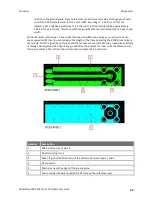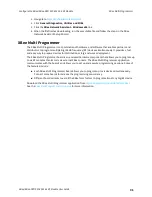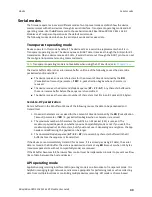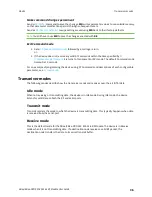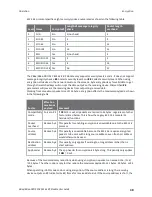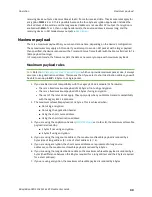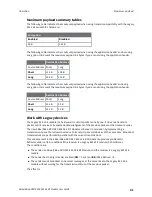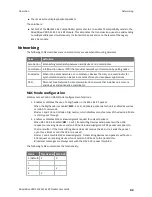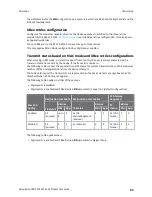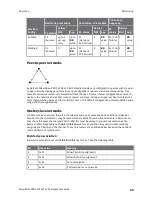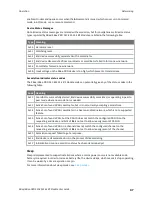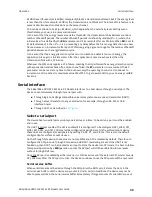
Modes
Serial modes
XBee/XBee-PRO S2C 802.15.4 RF Module User Guide
35
Both of these methods temporarily set the device's baud rate to 9600 and return an
OK
on the UART
to indicate that Command mode is active. When Command mode exits, the device returns to normal
operation at the baud rate that
BD
is set to.
Send AT commands
Once the device enters Command mode, use the syntax in the following figure to send AT commands.
Every AT command starts with the letters
AT
, which stands for "attention." The AT is followed by two
characters that indicate which command is being issued, then by some optional configuration values.
To read a parameter value stored in the device’s register, omit the parameter field.
The preceding example changes
to
My XBee
.
Multiple AT commands
You can send multiple AT commands at a time when they are separated by a comma in Command
mode; for example,
ATNIMy XBee,AC<cr>
.
The preceding example changes the
NI (Node Identifier)
to
My XBee
and makes the setting active
through
Parameter format
Refer to the list of
for the format of individual AT command parameters. Valid formats
for hexidecimal values include with or without a leading
0x
for example
FFFF
or
0xFFFF
.
Response to AT commands
When using AT commands to set parameters the XBee/XBee-PRO S2C 802.15.4 RF Module responds
with
OK<cr>
if successful and
ERROR<cr>
if not.
For devices with a file system:
ATAP1<cr>
OK<cr>
When reading parameters, the device returns the current parameter value instead of an
OK
message.
ATAP<cr>
1<cr>
Apply command changes
Any changes you make to the configuration command registers using AT commands do not take effect
until you apply the changes. For example, if you send the
BD
command to change the baud rate, the
actual baud rate does not change until you apply the changes. To apply changes:
1. Send
.
2. Send
.
or:
3.







